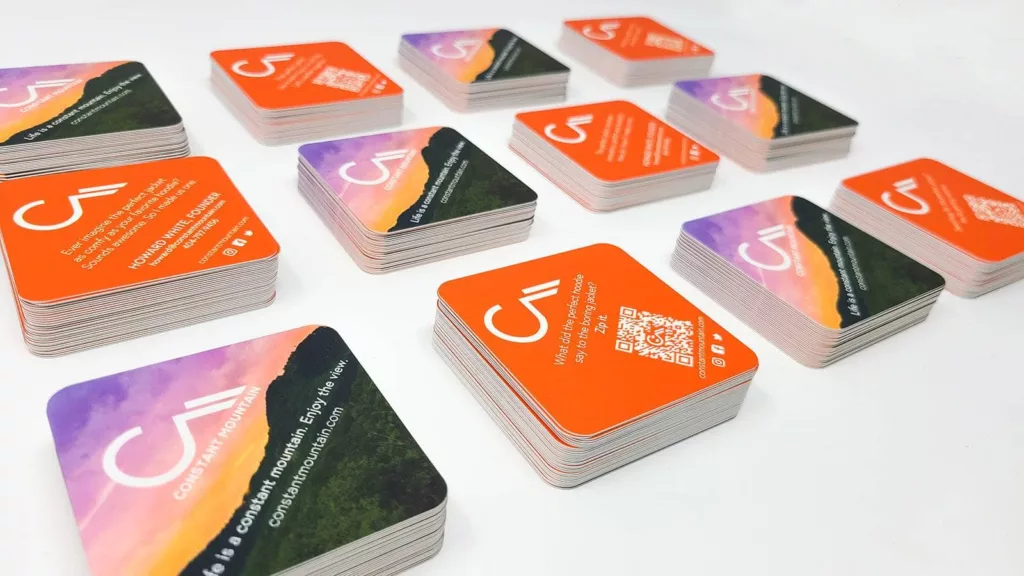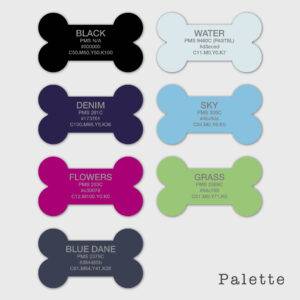The Branding (or Rebranding) Process
Maybe you’re ready to develop your brand from the ground up. Or maybe you have an established brand that just doesn’t reflect your vision or the audiences you want to reach today. While the creation or recreation of a brand can be intimidating – and is not something that should be done lightly – the basic principles of branding are relatively simple and serve as important guardrails to make sure that your branding project hits the target.
What is a brand?
When you think of branding, what comes to mind? Most likely, it’s a logo, a graphic, a name. Perhaps it’s a color or a style. Maybe it’s a particular product or even a feeling. In reality, a brand is all of these things and more. A company’s brand is essentially how it is perceived. It’s the impression it leaves, the feeling that it evokes and the experience that it creates. At its most basic, your brand is what people think about you. It tells people who you are and what you stand for. It tells them what to expect from you. So, to build a brand that connects with the customers that you want, you have to start first with the customers themselves.
CREATING A BRAND
#1 Determine and Define Your Target Audience
At the foundation of every successful brand is a deep understanding of its target audience. Understanding your customers, their needs and their challenges is key to making sure that your brand resonates. While that may start with hard data and statistics, it doesn’t stop there. Think through all the facets of who they really are as people. What is their background? What are their interests? What do they need? What do they not have time for? Who are they connected to? How do they spend their free time? What problems do they need to solve? Understanding all of these dimensions of your customers as real people can help you to tailor your brand story to connect with them in a meaningful way. Think you already know your target audience like the back of your hand? Make sure to consider what may have changed since the last time you took a look. Life moves fast, and things change rapidly, especially as the role of technology in our everyday lives continues to evolve. So, if you haven’t checked in lately, now’s the time to take a fresh look at where your customers are and what they’re doing in the here and now. After all, if you want to maintain a relationship, you have to keep in touch.
#2 Define Yourself
Once you’ve defined and delved into your target audiences, it’s time to turn your attention inward and understand who you are and what you have to offer to your customers. What is the unique value or benefit that you can provide? What sets you apart? What’s important to you? What do you do differently? What kind of personality should your brand have? If it was a person, how would you describe it? It’s important that these differentiators aren’t just about products or features but something deeper. At some point almost any product or feature is a commodity that someone else can replicate. What they can’t replicate is what makes you uniquely you, those qualities that are solely yours, your passion – in other words, your brand.
#3 Get Creative
Now that you understand your audience and how you uniquely relate to them, it’s time to get creative. There are many elements that weave together to comprise your brand but in terms of creative development they generally fall into two areas: visual design and brand voice. Crafting Your Visual Identity Creating a visual identity for your brand is what most people think of when they think of branding. In fact, 55% of consumers say their first impression of a brand is visual. You can begin with the creation of a logo for your brand then complement it with a defined color palette, typography (font) selections, iconography or other visual assets that can be applied throughout all of your branded materials. Of course, visual brands are as diverse as the people and companies that create them. But we believe that there are some common elements that many successful brand marks share: Authentic: Great brand identities are authentic and personal to the company, brand, vision or person that they represent. An enduring example of this concept is the Walt Disney Company with its stylized signature logo that directly connects to its founder and his driving vision to create magic and memories. Evocative: Successful brand identities evoke a psychological or emotional reaction. Often this is through the use of color. Historically, for example, many fast food brands have used red or yellow which are known to trigger hunger, happiness and urgency. Blue is frequently used by financial brands to convey confidence and trustworthiness. Brands can also use imagery to create feelings – think of the World Wildlife Fund’s lovable panda. Targeted: A successful brand should speak directly to its intended audience. While this might seem obvious, it is often a surprising stumbling block for brand builders who are unable to differentiate their own tastes or preferences from those of their audience. A clear understanding of your audience is key to making sure that every element of your brand speaks directly to them. Tuned: The key determining factor in brand success is connection. No matter how visually appealing (or unappealing) a brand’s identity may be, the ultimate test is how well it resonates and connects with its audience.

Creating Your Brand Voice The other essential piece of your brand is finding and defining your brand voice. If your brand was a person, what would they sound like in conversation? It’s critical that the tone that you use to address your audience is one that resonates easily with your target customers. Think about the style and approach that your target customers would find engaging and accessible. Is it casual or more formal? Inspiring or more fact-focused? Take a look at other types of content that they consume to get a glimpse of what attracts them. And you can also take a look at your own top-performing content. If there are pieces you’ve created that significantly outperform the rest, is there something that they have in common? In addition to your target audiences, you can also look to your own values to inform your brand voice. For example, if one of your core values is transparency, then simple, straight-forward language will help to convey that. Or if you want your brand to feel accessible, then more casual, conversational language will be a better fit than more formal styles. Sometimes, it may even be easier to start with a list of what you don’t want in order to arrive at what you do. For example: My brand voice is not formal or stuffy. My brand voice is not boring. My brand voice doesn’t sound out of touch. leads you to My brand voice is casual and approachable. My brand voice is engaging, conversational and entertaining. My brand voice is modern and on-trend.

#4 Document and Apply
Once you’ve crafted a visual identity and brand voice, you’ve reached perhaps the most crucial step of all: consistent application. Consistency in your brand is the key to building awareness, recognition, trust and rapport with your audience. That’s why it’s so important to make sure that your brand standards, once defined, are applied consistently across all of your materials and communications. 90% of consumers say that they expect to have a similar experience with your brand across all platforms and channels. One of the most fundamental ways to accomplish this is through the creation of Brand Guide. This document should include all of the standards and specifications for your brand to help both your internal team and any external partners to understand and maintain the core tenets of the brand. A typical Brand Guide may include:
- A Succinct Outline of Your Core Brand Values and Story
- Logo Graphics and Usage Guidelines
- Other Graphics or Iconography Usage Guidelines
- Brand Colors (Primary and Secondary)
- Font or Typography Standards
- Brand Voice and Tone Standards including Style and Lexicon Samples
Documenting all of your brand standards in a Brand Guide not only makes it easy and efficient for you to communicate them to others, but it also provides a useful resource you can consult to check your consistency and intent as you make marketing decisions and produce materials. Remember, consistency builds brand equity.
MEASURING SUCCESS
So, once you’ve created your brand and sent it out into the world, how do you define success? How do you know it’s working? Of course, measures of success can be as unique as the brands themselves but, assuming you have put your brand into action with a smart marketing strategy and gotten it in front of your target audiences, there are some common benefits that you should see in a successful brand implementation.
- More Recognition: First and foremost, you should see rising brand awareness and growing brand loyalty as your target audiences come to recognize and trust your brand. Forbes has reported that brand recognition powered by consistent brand presentation across platforms can boost revenue by as much as 23%.
- More Customers: A natural outgrowth of growing brand awareness is more new customers discovering and engaging with your brand.
- More Alignment: A strong, consistent brand creates more alignment. Everyone understands the message and the method. Everyone gets it.
- More Pride: Creating a fresh and compelling brand also creates a sense of pride in the brand team and boost in team morale.
SO, SHOULD I DO THIS?
If you’re actively marketing or selling but you’ve never created a brand, then now is the time to define and develop your offerings in a truly compelling, branded package to maximize your reach and results. But what if you have an established brand already? How do you know when it’s time for a refresh or a complete rebrand? There’s no one-size-fits-all answer to that question. But here are a few things might mean it’s time to think about an update:
- You feel that your branding no longer reflects your vision.
- Your strategy has changed, or you’ve simply outgrown the current version of your brand.
- You want to connect with new audiences.
- Your brand looks dated or doesn’t stand out compared to the competition.
- You find yourself hesitant to share branded items like business cards or website links for fear of the impression they will make.
 Get some inspiration in this case study of one brand that took the rebranding plunge.
Get some inspiration in this case study of one brand that took the rebranding plunge.



